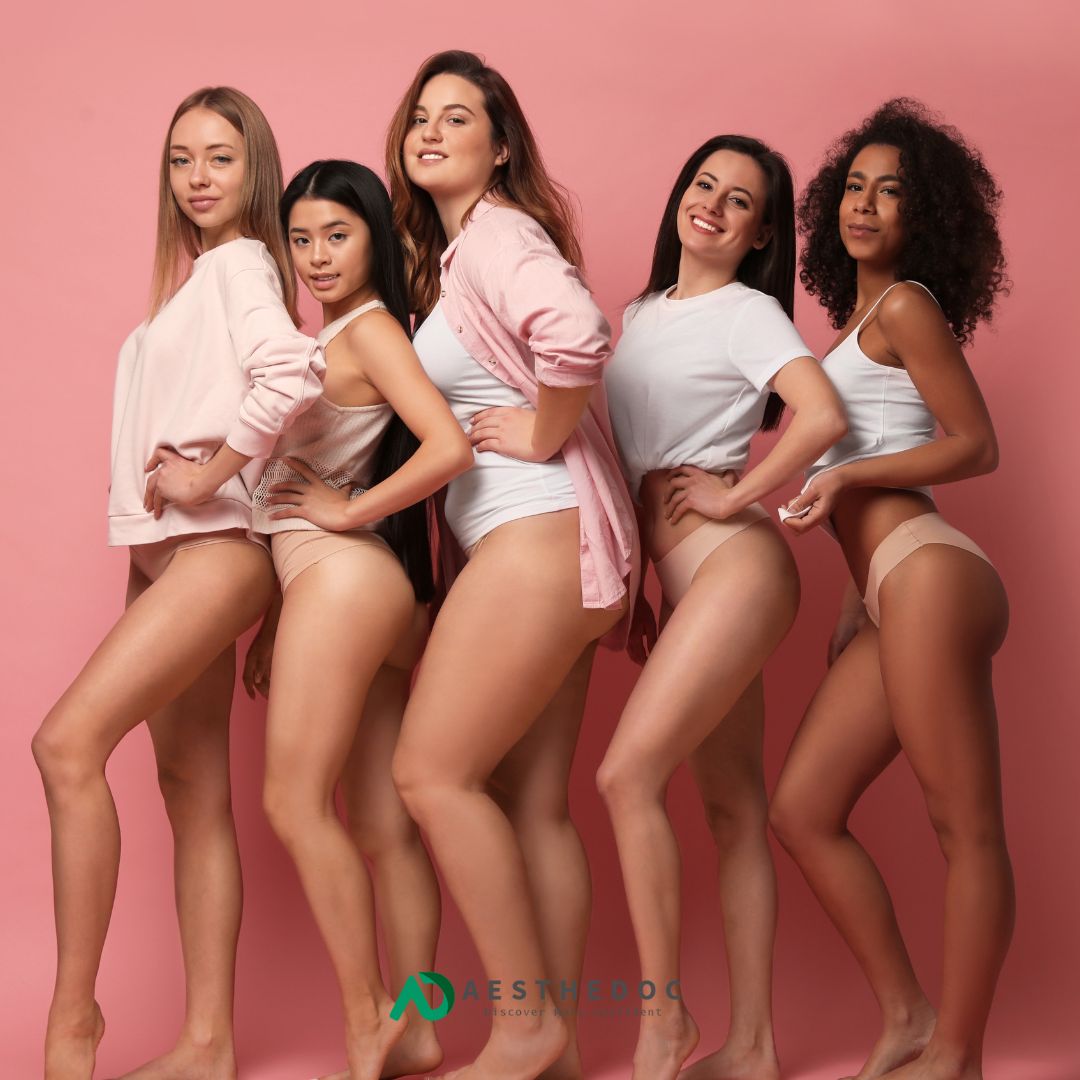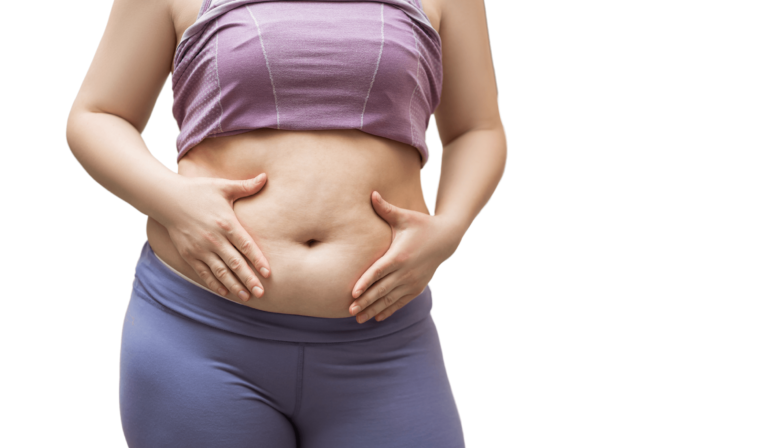Body contouring, also known as body sculpting, aims to eliminate fat, sculpt various areas of the body, and enhance skin tightness. Non-surgical alternatives like lipolysis utilize techniques such as cold therapy, heat treatment, and lasers. On the other hand, surgical options involve procedures like tucks, lifts, and liposuction. While surgical interventions come with increased risks and longer recovery periods. They typically yield more prominent and noticeable results after getting the body contouring treatment options.
Body Contouring Treatment Options, Reduction of Surplus Fat
It’s important to note that body contouring typically does not contribute to weight loss; rather, its focus is on shaping the body and addressing areas where conventional weight loss methods may be ineffective or where significant weight loss has resulted in excess skin.
What is body contouring?
Body contouring, also referred to as body sculpting, encompasses medical or surgical procedures designed to reshape specific areas of the body. These procedures may include:
- Removal of excess skin
- Reduction of surplus fat
- Reshaping or contouring targeted areas
What are the various types of body contouring?
Non-surgical body contouring, known as lipolysis, encompasses several methods:
- Cryolipolysis, which employs extremely cold temperatures to eliminate fat cells (e.g., CoolSculpting).
- Injection lipolysis, involving the introduction of deoxycholic acid into the body to target fat cells.
- Laser lipolysis, utilizing lasers to break down fat cells (e.g., Zerona).
- Radiofrequency lipolysis, employing ultrasound waves and heat to target fat cells (e.g., truSculpt).
Surgical body contouring options include:
Lifts and tucks:
Surgical procedures that remove excess fat and redundant skin, such as tummy tucks (abdominoplasty), facelifts (rhytidectomy), breast lifts (mastopexy), and double chin surgery.
Liposuction:
A procedure that suctions out fat deposits
Why is body sculpting utilize?
Individuals lpting to achieve a slimmer appearance or attain a specific shape, enhancing both their aesthetic and self-perception. It is frequently chosen for targeted areas where traditional methods like diet and exercise prove insufficient.
Surgical options within body sculpting can address the removal of excess skin, resulting in a smoother and more youthful complexion. These procedures are particularly beneficial for individuals dealing with surplus skin following significant weight loss or seeking to improve the effects of natural aging, such as loose, saggy, or wrinkled skin.
Bod contouring is versatile and can be applied to various areas of the body, including the arms, back, belly and flanks (love handles), buttocks, neck and chin, and thighs.
Procedure Details
What occurs before undergoing body contouring?
Prior to the procedure, your initial step involves a consultation with a plastic surgeon, during which you will:
- Discuss your objectives.
- Share your medical history, including health conditions, allergies, and past surgeries.
- Disclose the medications you are currently taking, including vitamins and over-the-counter drugs.
- Provide information on alcohol, tobacco, or illegal drug usage
Healthcare Conduct an examination
- Conduct an examination and measurements of the targeted area(s)
- Mark or outline the area(s) using a pen or marker
- Take photographs for reference
- Engage in a detailed discussion about available options and offer recommendations.
- Review potential risks, explore anesthesia choices, and discuss post-operative pain management if surgery is under consideration.
Should you choose to proceed, you will be required to sign a consent form, granting permission for the healthcare provider to perform the procedure. This also signifies your acknowledgment of the associated risks and a realistic understanding of the expected outcomes.
Specific body sculpting method selected
- Undergo blood work or a physical examination with your primary care provider
- Cease smoking
- Discontinue certain medications, such as aspirin, NSAIDs, and herbal supplements
What occurs during liposuction and other surgical body contouring procedures?
Typically conducted in a surgeon’s office, surgical center, or hospital, cosmetic surgeries can vary in duration from 45 minutes to several hours, depending on the specific procedure.
Throughout surgical interventions, the medical team is likely to:
- Preoperatively mark the targeted sites.
- Position you on a surgical table, conducting safety checks with nursing and anesthesia.
- Administer anesthesia either local or general based on the nature of the procedure.
- Clean and prepare the skin in the designated surgical area.
- Make incisions (cuts) in the skin, tailored to the specific procedure(s) being performed.
- Modify, reposition, or shape tissues and excess fat to achieve the desired aesthetic outcome.
- Muscle tightening, particularly during procedures like abdominoplasty, may be implemented
- Trim surplus skin.
- Employ liposuction, either independently or in conjunction with other techniques, to extract excess fat.
- Close any incisions upon completion of the procedure.
- Apply bandages for postoperative care.
What occurs during non-surgical lipolysis?
Typically conducted in an office or clinic setting, non-surgical lipolysis procedures are relatively time-efficient, lasting approximately 30 to 60 minutes per session.
Throughout the process, the healthcare team is likely to:
- Provide a robe or hospital gown for you to wear
- Position you comfortably on a chair or table
- Mark the targeted area of the skin using a pen or marker
- Administer a drug if injection lipolysis is part of the procedure
- Utilize specialized tools, such as paddles or a wand, to apply ultrasound waves, laser beams, cold, or heat depending on the specific type of lipolysis
It’s common for individuals to undergo multiple treatment sessions to observe significant results.
What occurs after body contouring?
For most individuals, returning home on the same day is common, even following surgical procedures. If surgery is involved, it is advisable to arrange for someone to drive you home and stay with you on the first night. Additionally, you may have a slender tube positioned near one or more incisions to facilitate fluid drainage and minimize swelling.
Post-procedure, your surgical team will provide recovery instructions, which may encompass:
- Managing the drains and changing bandages.
- Exercising caution with physical activity while maintaining mobility to prevent blood clots.
- Promptly reporting any complications, as detailed during preoperative discussions.
- Avoiding exposure to direct sunlight.
- Utilizing prescribed medications, such as ointments or pills, for pain management or infection prevention.
In the case of nonsurgical body sculpting, you can typically leave the office or clinic immediately after the procedure. Transportation may not be necessary, and you can resume your normal activities for the day.
What are the potential risks and benefits associated with body sculpting?
Benefits of body contouring often include:
- Enhanced definition and shaping of targeted body areas.
- Attainment of a more youthful and slimmer appearance.
- Improved skin texture, resulting in smoother skin.
- Symptomatic relief in specific cases.
It’s important to note that surgical interventions typically offer more immediate and noticeable results, whereas nonsurgical options may take several weeks or months to reveal visible changes.
What are the potential risks or complications associated with surgery?
Procedures such as lifts and tucks involve surgical interventions, and while relatively uncommon, they do carry certain risks. These risks may include:
- Asymmetry, where both sides do not appear the same.
- Bleeding or blood clots.
- Anesthesia-related complications, such as nausea, vomiting, or difficulty waking up.
- Damage to nerves, blood vessels, muscles, or organs.
- Hair loss in proximity to incisions.
- Hematoma, a collection of blood beneath the skin that may require drainage.
- Incisions that do not heal properly.
- Infection.
- Nerve injury leading to weakness, numbness, or changes in skin sensation.
- Prolonged pain or swelling.
- Heart or lung-related issues.
- Unfavorable results, necessitating follow-up surgery.
- Scarring, rippling, or skin discoloration.
- Skin irregularities and discoloration.
For nonsurgical alternatives, the risks are generally more limited and may include:
- Hives or rash.
- Pain or soreness.
- Redness of the skin.
- Swelling.
- Unsatisfactory results, potentially requiring additional sessions.
Recovery and Outlook
How long is the recovery period following body contouring?
Recovery from surgical procedures can span from weeks to months, influenced by the extent of the intervention and the size of the incisions.
In contrast, nonsurgical alternatives typically entail much shorter recovery times, with many individuals returning to work and normal activities immediately after the treatment.
When to Contact Your Healthcare Provider
If you’ve undergone nonsurgical procedures, the associated minimal risks typically require little vigilance for complications.
However, following surgical procedures, it is crucial to promptly inform your healthcare provider of the following signs indicating potential infection or other complications after body contouring treatment options.
- Bleeding, drainage, redness, or swelling at the incision site.
- Chest pain.
- Dizziness.
- Fever exceeding 100.5 degrees Fahrenheit.
- Severe pain unrelieved by medication.
- Nausea or vomiting.
Body Contouring Treatment Price in Islamabad
Depending on the treatment region and technique chosen, body contouring treatments in Islamabad, Pakistan, might have varying costs. In general, the cost ranges from 100,000 to 600,000 PKR.
A note from Aesthedoc.Com emphasizes that body contouring treatment options, effective for fat elimination and body shaping when traditional methods fall short, achieves optimal results with lower complications when individuals are at their ideal weight. Various procedures, including nonsurgical lipolysis and surgical liposuction, cater to different needs. Skin excision, among other body sculpting techniques, addresses loose or wrinkled skin. Engage in a discussion with your healthcare provider to explore options and understand associated risks.



